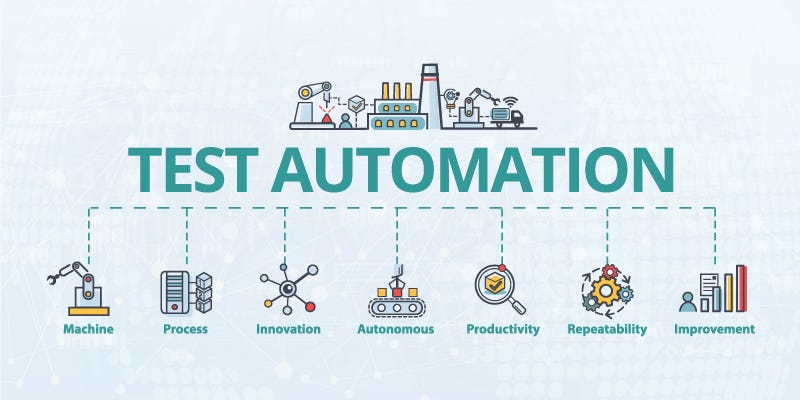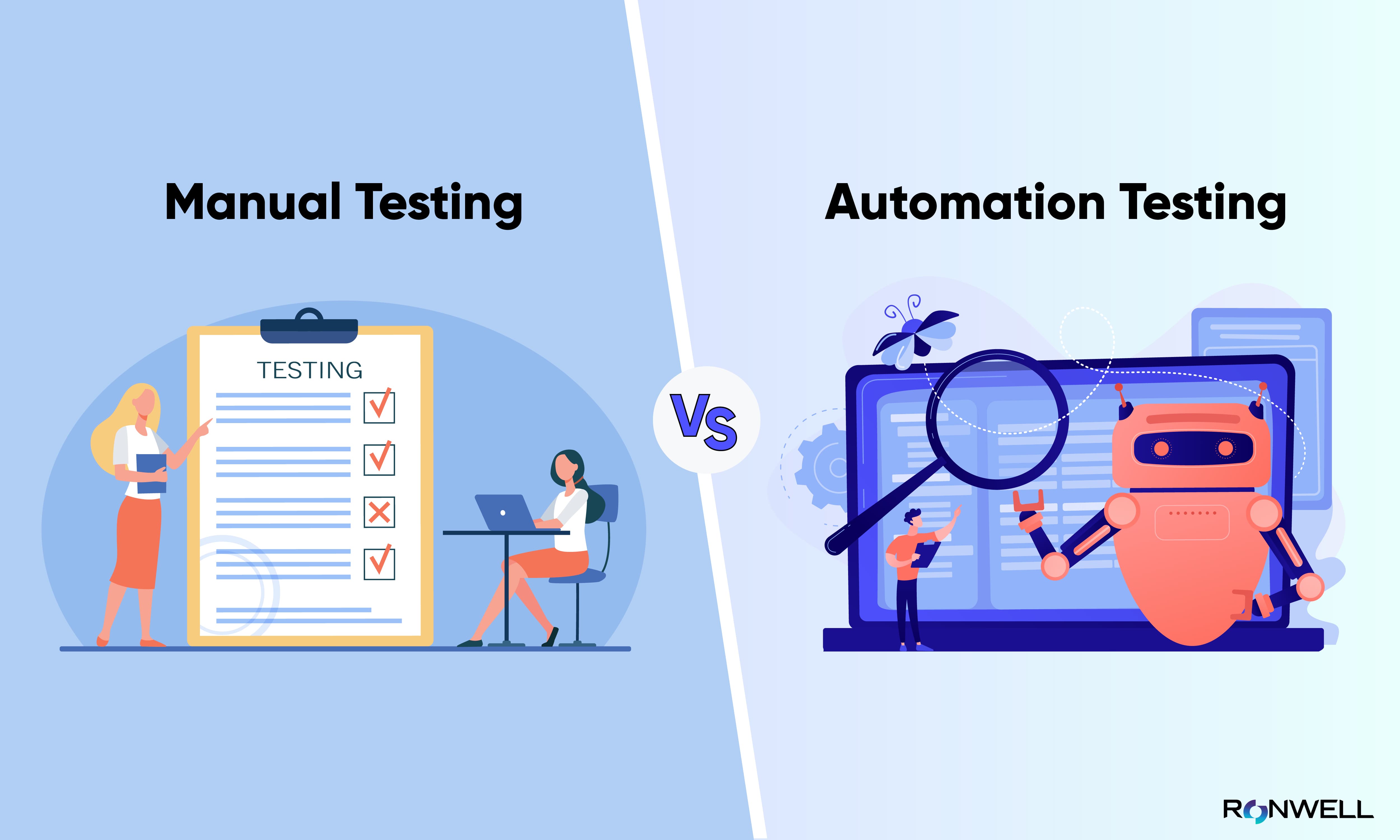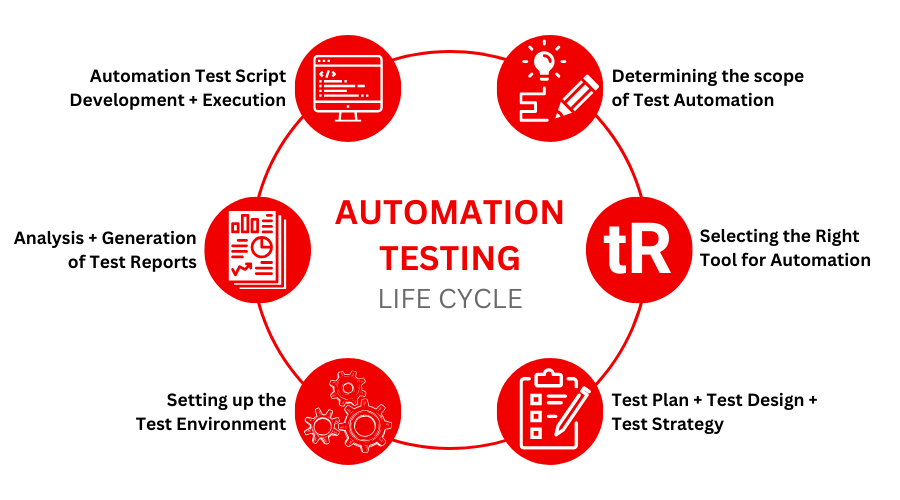From Handbook to Automated Screening: A Comprehensive Overview to Transitioning Smoothly and Successfully
In the world of software program screening, the shift from handbook to automated procedures has actually come to be a significantly important shift for companies looking for to boost performance and accuracy in their testing practices. As technology remains to development, the demand for smooth and reliable automated testing approaches has never been much more important. The journey from manual to automated screening is not without its obstacles, yet when come close to tactically and with a clear plan in mind, the advantages can be significant - automation testing. In this thorough overview, we will explore crucial actions and considerations necessary for an effective transition, from the initial selection of devices to the combination of automation into existing workflows. Stay tuned to discover the insights that will certainly aid lead the way for a smoother and extra efficient testing procedure.
Advantages of Automated Examining
Automated testing offers many advantages, improving performance and accuracy in software growth processes. One main advantage is the significant reduction in screening time. Automated examinations can be run all at once on multiple gadgets and operating systems, considerably quickening the testing phase contrasted to hand-operated testing. This boosted performance permits faster comments on the quality of the software program, enabling designers to recognize and address issues immediately.
Additionally, automated screening makes certain a greater degree of accuracy in spotting defects. Uniformity in testing is also boosted, as automated tests perform the very same actions exactly each time they are run.
Selecting the Right Devices

Firstly, assess your goals and demands. Comprehend the range of your job, the innovations involved, and the skill collection of your group. This evaluation will certainly aid you determine the capacities and attributes you need in your screening tools.
Secondly, take into consideration the compatibility of the devices with your existing procedures and systems. Smooth assimilation with your present software application development lifecycle is vital to ensure a smooth change to automation.
Furthermore, assess the scalability and flexibility of the devices. As your screening needs progress, the devices ought to be able to adjust and fit changes properly.
Last but not least, consider the support and area around the tools. When executing automated screening, robust assistance and an active user neighborhood can provide beneficial resources and aid. By very carefully thinking about these facets, you can choose the right devices that line up with your needs and set the stage for an effective transition to automated screening.
Writing Efficient Examination Manuscripts

When crafting test manuscripts, it is vital to consider the details needs of the software being examined and guarantee that the manuscripts attend to all critical capabilities. Clear and descriptive naming conventions for examination scripts and test situations can enhance readability and maintainability. Furthermore, including error handling devices within the test scripts can assist in identifying and addressing issues without delay.
Additionally, arranging examination manuscripts right into modular elements can boost reusability and scalability, decreasing redundancy and improving efficiency in examination manuscript maintenance. Regular evaluations and updates to examine scripts are vital to keep speed with progressing software program demands and functionalities. By complying with these concepts, testers can develop durable and effective examination manuscripts that add significantly to the success of automated testing processes.
Integrating Automation Into Workflows
Effective combination of automation devices right see post into existing operations streamlines processes and improves performance within software program development cycles. When incorporating automation into workflows, it is crucial to identify repetitive tasks that can be automated to save time and decrease human error. By perfectly integrating automated testing tools like Selenium or Appium explanation into the software development lifecycle, groups can attain faster responses on code changes, resulting in quicker bug detection and resolution. This integration enables continual screening throughout the growth procedure, making sure that any type of issues are identified early on, resulting in greater software program top quality. Furthermore, automation can be utilized to set off examinations instantly after each code dedicate, offering immediate recognition and releasing up testers to focus on even more facility situations. Appropriate integration of automation devices calls for partnership between growth, screening, and operations groups to develop a unified workflow that maximizes effectiveness and effectiveness in supplying high-grade software.
Guaranteeing a Smooth Change
Successfully transitioning to automated screening involves careful preparation and careful implementation to optimize and minimize disruptions effectiveness in the software program growth process - automation testing. To guarantee a smooth change, it is important to start by carrying out a thorough assessment of the present testing processes and determining locations where automation can bring one of the most substantial advantages. Involving with all stakeholders early on at the same time, consisting of developers, testers, and project managers, is important for gathering support and buy-in for the automation effort
Interaction is crucial throughout this shift stage. Clear interaction of the goals, benefits, and expectations of automated testing assists to handle any type of resistance or issues that YOURURL.com may occur. Additionally, offering sufficient training and resources for team members to upskill in automation devices and strategies is crucial for making sure a successful transition.

Conclusion
Finally, transitioning from guidebook to automated screening supplies numerous advantages, consisting of increased efficiency and dependability. By choosing the proper devices, creating reliable examination manuscripts, and incorporating automation flawlessly right into workflows, organizations can ensure a smooth and successful transition. It is important to accept automation as a useful possession in software application testing processes to enhance overall quality and productivity.
In the realm of software testing, the change from guidebook to automated procedures has actually come to be a significantly crucial shift for organizations seeking to enhance performance and precision in their screening methods. Automated tests can be run at the same time on multiple tools and running systems, substantially speeding up the screening phase compared to manual screening. Uniformity in testing is additionally boosted, as automated tests implement the very same steps precisely each time they are run.To ensure the effective application of selected screening devices, the development of effective test manuscripts plays an important role in confirming the capability and performance of automated procedures - automation testing. By complying with these principles, testers can develop efficient and robust examination manuscripts that contribute dramatically to the success of automated testing processes